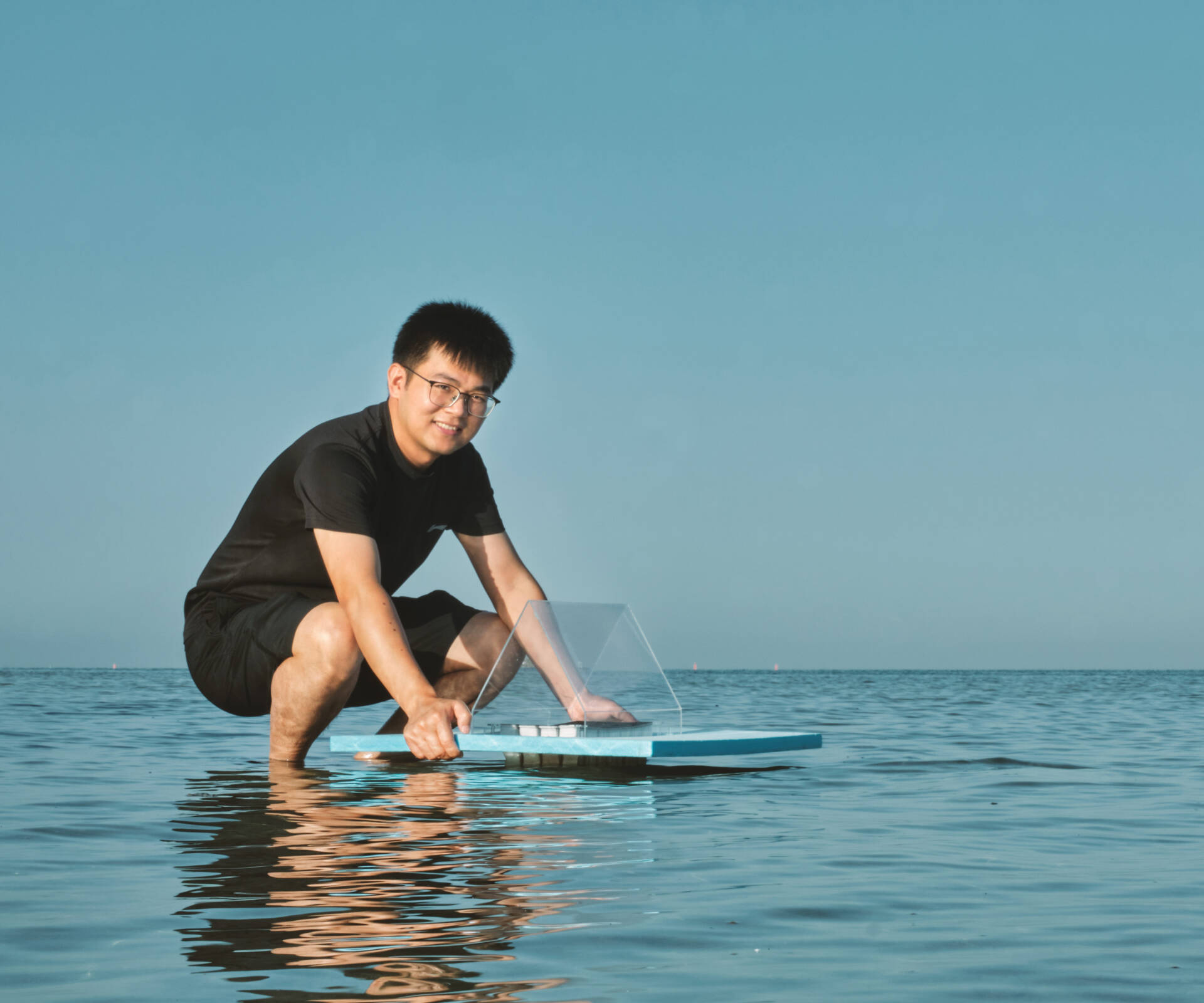When nanomaterials researcher Qiaoqiang Gan sat with his daughter in 2017 to watch Life of Pi, his attention and imagination were captured by the floating solar still that the shipwrecked boy uses to generate drinking water from sea water.
At the time, Gan had recently begun applying his expertise in light-absorbing nanomaterials to develop materials that heat up very efficiently in sunlight for use in a water distillation apparatus for clean drinking water production.
“When I saw the solar still in the movie, I immediately understood the impact on our daily life, especially under the pressure of global warming,” Gan says. “As the climate changes, access to fresh water will become more and more important.” In 2018, Gan set up a company called Sunny Clean Water to turn his solar still concept into an inexpensive, electricity-free product for generating safe drinking water from impure or brackish sources.
“As the climate changes, access to fresh water will become more and more important.”
But for boys and tigers lost at sea, and for the growing coastal populations in arid regions around the world, such nanomaterial-enhanced solar stills face a limitation. They cannot efficiently use seawater as a water source. As the seawater evaporates, it leaves its salt behind, which can gradually coat the solar heating material and choke the performance of the device.
The latest phase in Gan’s solar still research — and a new concept for removing the salt — came about in 2021, after he joined KAUST and discovered new research synergies with his KAUST colleagues. In particular, he forged a collaboration with fellow nanomaterials researcher Yu Han and research scientist Kaijie Yang.
Yang had recently created his own solar still design, inspired by a related project that he and Han had been working on. “I was developing devices to harvest water from the atmosphere, using a rationally designed 3D device architecture, when I realised that I could apply the same concept to a solar evaporator,” Yang says.
Yang’s novel solar still design used water flows based on salt concentration gradients to regularly wash away the accumulated salt. Crucially, however, his design minimises associated energy losses, keeping the solar heat trapped within the evaporator.
Yang and Han teamed up with Gan to advance the concept. “The timing was perfect,” Gan says. “Yang had produced a prototype solar still, and I could directly apply my experience obtained from my start-up company to produce larger scale demos for field tests and to prepare for commercialization,” he says. “Yang has now joined my group as a research scientist, and — with Han as co-principal investigator — we have secured funding to commercialize the system.” A story with a Hollywood ending.

